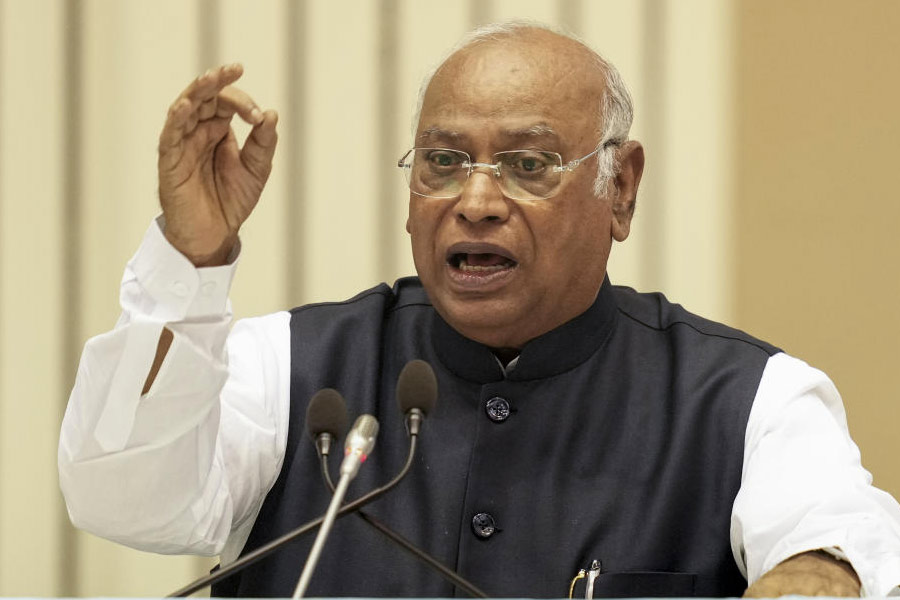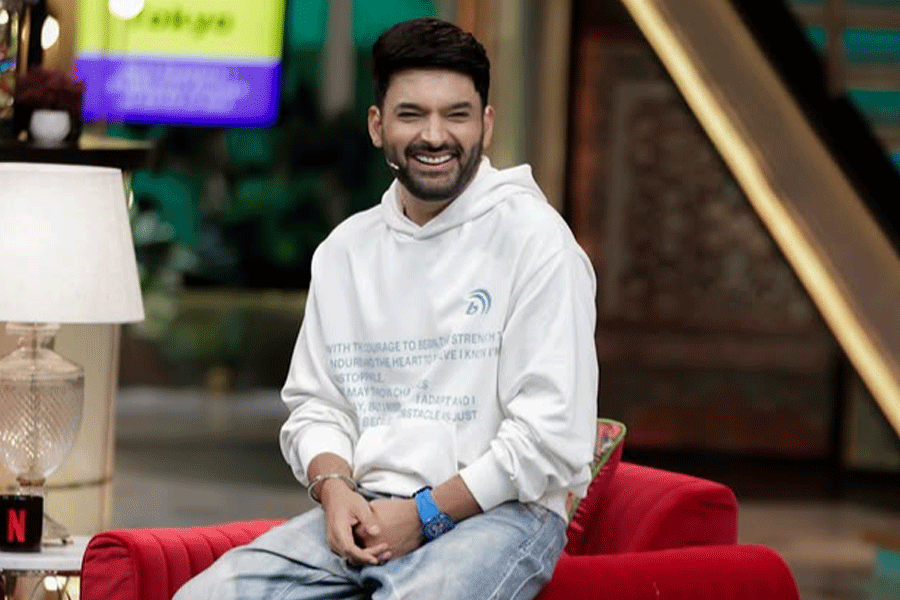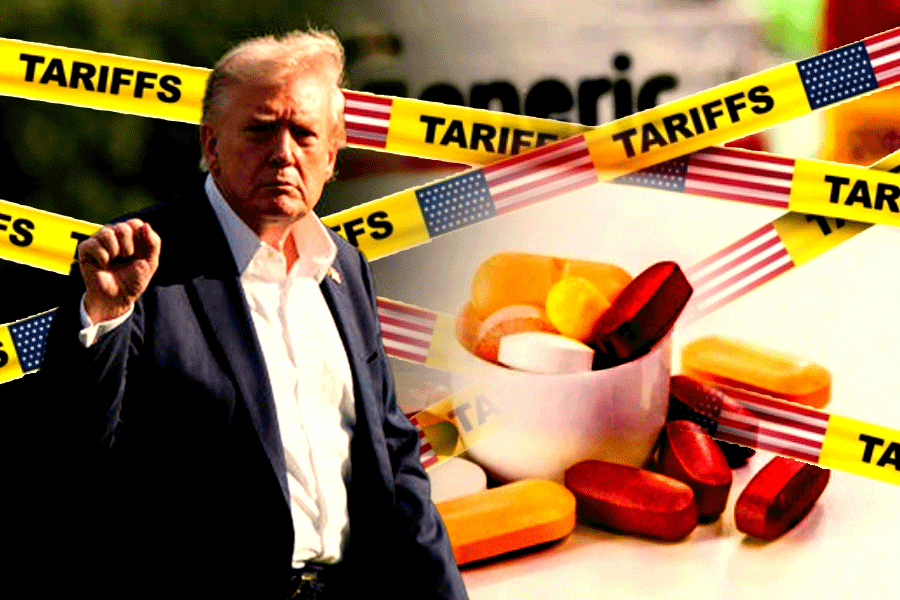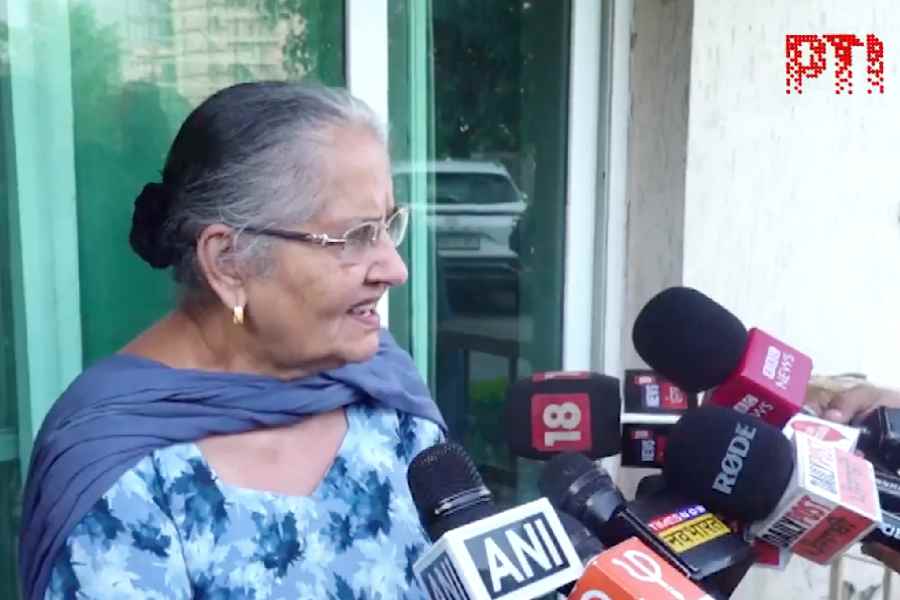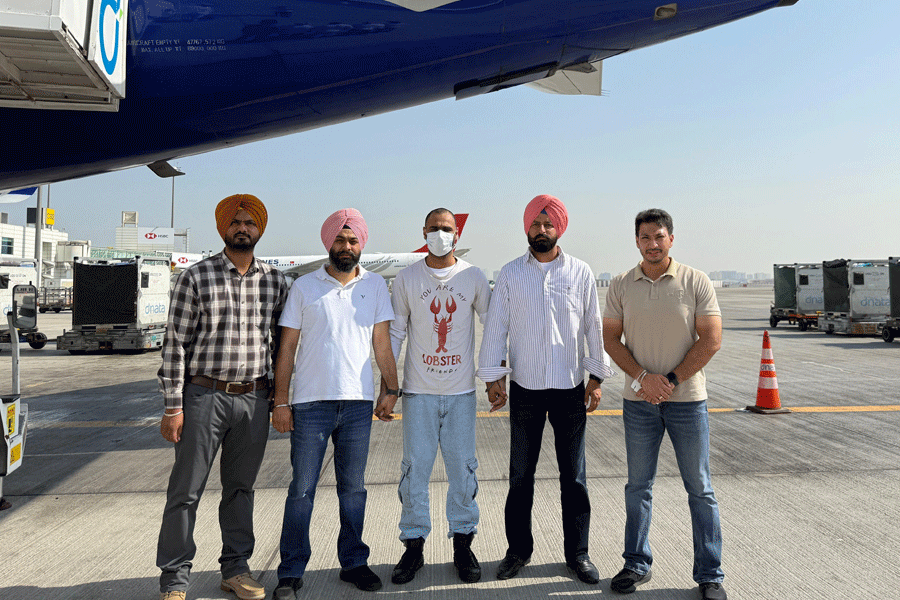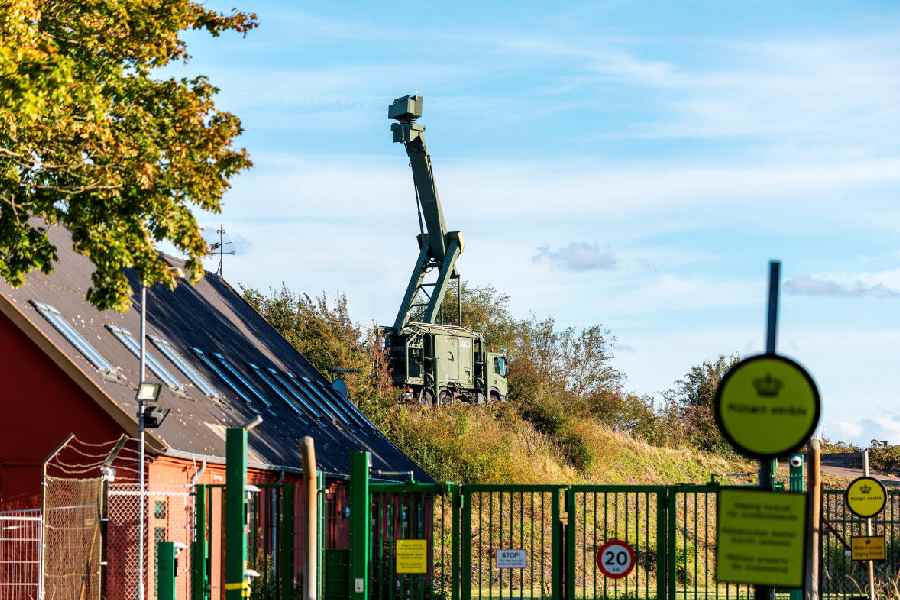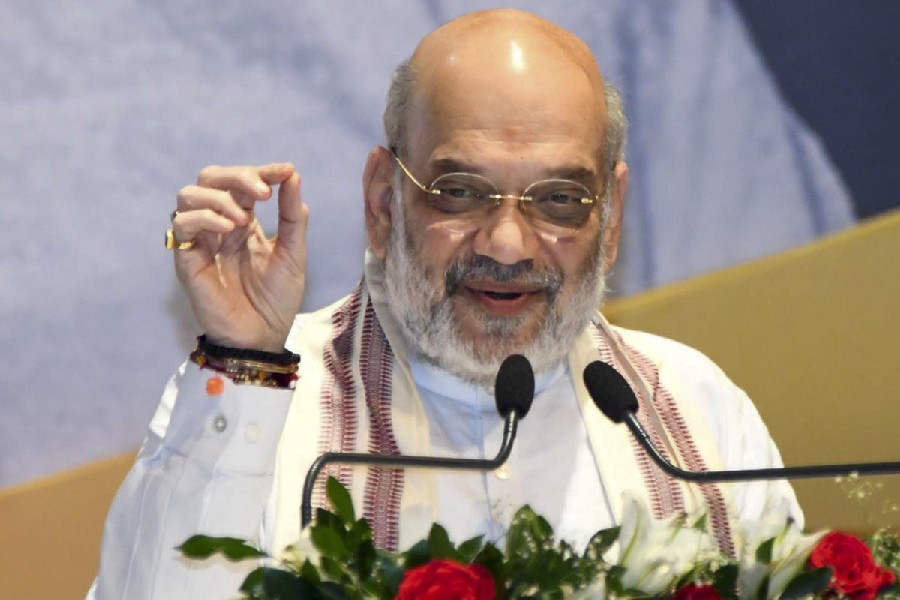
Like movie fans around the world, Rampage director/producer Brad Peyton loves to see Dwayne Johnson in terrifying, larger-than-life scenarios that require all his skill and strength, humour and charm, to overcome. Peyton has already placed his intrepid star under a volcano on a sinking island, and dropped him into the the epicenter of a magnitude-9 earthquake. Now, in their third big-screen adventure — a movie that’s massive on every level-scale, scope, action and visual impact — Peyton ups the ante again by pitting Johnson against something he has never faced before: an antagonist even bigger than he is.
And not just one, but three-gargantuan, genetically mutating creatures, completely out of control, on a collision course with civilisation.

THE WOW MOMENTS
Johnson is up for the challenge. “Brad and I are like a couple of kids when we get together on a project like this,” he says. “Art always reflects the artist, so I think fans can count on great action and great fun, and a fair amount of destruction. We always want to push things farther than we did before and to constantly raise that bar. Or possibly go over it”.
“There were lots of ‘wow’ moments, and so many sets that just blew my mind,” adds Naomie Harris, who stars opposite Johnson as Dr Kate Caldwell. “I’d never been in a helicopter or a plane that’s been recreated with hydraulic effects to tilt so that I’m hanging from a wire and flying around. That’s the wonderful thing about Brad and Dwayne, and the whole producing team. At the centre of everything they want to make you feel that it’s all happening right here, right now, and that you’re really in the heart of the action. And that’s what the audience will see.”
Among the interests Peyton and Johnson share that factored into Rampage are an affinity for movies about ferocious giant creatures and an affection for the classic video arcade game Rampage, featuring a trio of supersized creatures knocking down cities and running wild over the landscape. Also, the commitment to anchor this kind of outsized cinematic spectacle with a genuine story and characters.
Though the arcade game was the original spark of inspiration, it didn’t provide a lot beyond its pure and simple premise, which suited Peyton perfectly. “I was interested in the challenges and opportunities that came from the game,” he says, “but the fact that it had so little narrative allowed us to make our own movie, create our own monsters and explore our own themes. We paid homage to it in a fun and respectful way by utilising its creatures and planting some Easter eggs for fans.”
In the film, what triggers the rampage is a secret bio-genetic experiment that goes off the rails, unleashing a gene-altering substance that causes animals to grow not only in strength and aggression, but in more frightening and unpredictable ways as they absorb volatile DNA from other species. The first casualty of this substance is George, an albino silverback gorilla housed at a California wildlife sanctuary. George is very special to Johnson’s character, Davis Okoye, a primatologist who rescued him from poachers, raised him, taught him to sign, and shares an unbreakable bond of friendship with. So, when George turns overnight from a normal-sized, peaceful ape to a roaring, destructive colossus, Davis is determined to do whatever he has to do to keep George safe, while trying to figure out what is happening to him.
Johnson and Harris lead a strong ensemble cast, including Jeffrey Dean Morgan as a cagey government agent shadowing Davis and Kate’s progress throughout the crisis; Joe Manganiello as the leader of a top-notch mercenary unit who meet their unfathomable match in a Wyoming woods; and Malin Akerman and Jake Lacy as the billionaire siblings behind the rogue experiments, who are still intent on using this pathogen for their own ends.
FRESH AND EXCITING
Producer Beau Flynn, who has successfully teamed with Johnson on numerous projects, cites one of the ways in which he feels Rampage stands apart from its genre: “Ordinarily, in this kind of movie you have a hero who is trying to stop the monstrous creatures at any cost and fight to the death to save the planet. I’ve rarely seen one where the hero is not only trying to save the world but, at the same time, trying to help and protect one of the combatants. Davis knows George never signed up for this. And not only does Davis want to keep him alive but, he might ultimately need George’s help in an epic monster battle yet to come, and that, to me, is fresh and exciting.”
The panic over George is further escalated by the appearance of two other shockingly transformed animals — first, a mammoth wolf that not only leaps great heights but is somehow able to fly, and, later, a crocodile the length of a football field and moving like a cruiser. Having had more exposure to the pathogen, they are exponentially larger and fiercer. Not only growing, but continuing to evolve, all three set off on a path of destruction toward Chicago.
Even so, the filmmakers sought to keep a fun and lighthearted tone in play, allowing ample opportunity for humour alongside the movie’s thrills and Kaiju-style battles, with plenty of one-liners delivered with Dwayne Johnson’s inimitable style.
Ryan Engle, who developed the story, and shares screenplay credit with Adam Sztykiel and San Andreas writers Carlton Cuse and Ryan J. Condal, says, “The challenge was how to tell a story about mutated animals that’s emotional, action-oriented, scary, and fun, and how to create a different kind of scenario.”
As producer Hiram Garcia suggests, “What makes these creatures so interesting is that they’re hybrids, combining their own genetic makeup with traits of other animals to make them tougher and more dangerous fighters.... Once you ground that premise, you say, okay, now what would happen if this technology gets into the wrong hands?”
While taking great liberties with the science, the CRISPR gene-editing program the film cites is, in fact, real. Originated in 1993, its goal is curing cancer and other diseases through modifications to an organism’s genetic code.
Johnson, also an executive producer on the film, concedes, “The science is fascinating. But we had to maintain that balance between delivering on a scientific perspective that makes sense and making sure we’re right around the next corner winking at the audience and letting them know we’re all in on this: hey, we’re making a big, fun movie about a crocodile with 1,118 giant teeth, and a gorilla the size of a house, who likes to flip me off.”
THE HEART OF THE STORY
Focusing on those stunning visuals, the filmmakers enlisted preeminent visual effects company Weta Digital to create the non-human Rampage cast. Their input, Peyton attests, “was absolutely essential. We couldn’t have pulled off such an ambitious project without storytellers of their calibre....”
The wolf and croc, born entirely of groundbreaking visual effects, take centre stage without compromise. “It was very important to us not to hide the creatures with scenes that take place at night, or in rain or under overcast skies. We wanted to show them in broad daylight, mutating and rampaging over the course of the film, and to juxtapose blue skies with the kind of havoc they’re causing,” said Flynn.
With George, they took a different approach. The great ape is an amalgam of Weta’s digital artistry and performance capture, with actor Jason Liles contributing the personality and humanity that will allow audiences to embrace George as a sentient being, and to ensure the credibility of his bond with Davis —who realises he is as much a victim of his outrageous metamorphosis as the people now fleeing from him in fear. And even as the animal grows and changes, George remains the heart of the story.
“Right away, I knew the emotional core and through-line of the story was going to be their connection,” Peyton relates, “Because we place so much emphasis on it, all the other elements — the plane crashes and explosions and battles — have more value because now you care if someone is going to live or die, you care if Davis and George are going to be reunited. I always want to make things as exciting as possible, but, I feel, if you have the fun without the underpinning of real emotion and real stakes, it doesn’t have the same impact....”
“The main themes of the movie are trust, and friendship,” he sums up, “and the lengths you would go to save your friend.”
BIG MEETS BIGGER
Overall, in the story’s reach, in the sheer size and scope of the action and visual feast, the massive sets, massive creatures, everything about Rampage echoes the idea of “big meets bigger”. It was the director’s intention, he says, “to embed the audience in the events, as opposed to having them witness something that’s happening ‘over there’. With this, I wanted people to feel that these scary things that are so big and move so quickly are all around them, all the time. I want to put them right into the action as much as possible.”
“What got me excited about Rampage was the opportunity to create something epic,” adds Johnson. “What I mean by that is, we have not just one gigantic, amazing gorilla, we have an immense crocodile that comes out of the swamps of Florida, and an insanely big wolf from the Northwest… and then this big, bald, brown, tattooed guy running around with them,” he laughs. “The game was built on playing and tearing things up, and I think this pays homage to that idea. We set up the story and then suddenly, bang, you’re off; you’re on this ride and it’s all adrenaline.”


